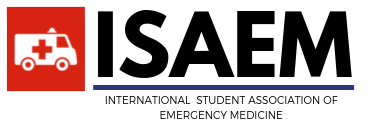SJS syndrome and TEN in one page
Why is this important and why should you care? Stevens-Johnson Syndrome (SJS) is rare (2-7/million) but has very high morbidity and mortality especially if involved body surface area (BSA) is large where it would be called Toxic Epidermal Necrolysis (TEN).
Let’s start with the definition of SJS / TEN:
This is a severe mucocutaneous reaction (involving the skin and mucous surfaces) to a medication or infection that involves extensive necrosis and detachment of epidermis. If the BSA of detachment is < 10% it is called SJS, 10-30% is SJS/TEN overlap and > 30% is called TEN.
Patients with HIV, Systemic Lupus Erythematosus (SLE), active malignancy, or certain HLA genes are at higher risk. Pathophysiology is not well understood but believed to be the creation of drug-specific cytotoxic T-cells that kill keratinocytes. Important medications to remember are allopurinol, sulfonamide antibiotics, NSAIDs, cephalosporin antibiotics, and lamotrigine. Also related to viral infections and mycoplasma pneumonia.
Let’s move onto clinical presentation.
Skin changes are non-specific, anywhere from diffuse erythematous macules or purpura to atypical targetoid lesions which later can develop into hemorrhagic bullae. Full thickness epidermal detachment is seen later. Mucous involvement of 2 sites is seen in 90% of cases and is generally erosion and blistering of anogenital and oral surfaces. Ocular involvement as conjunctivitis is common as well. Systemic findings are fever, hypotension, tachycardia. Typically begins 1-4 weeks after taking offending medication, then the acute phase lasts for 7-10 days, then re-epithelization over 3 weeks. Erythema multiforme and exanthematous drug eruptions are less severe differentials to keep in mind.
There are no specific investigations, and diagnosis is usually made clinically. Our mainstay of treatment is stopping the offending agent and conservative management. Admission of a patient to a burns unit or the ICU is an important initial decision. Hydration, temperature regulation, treatment of secondary infections are the most important aspects of treatment as this results in significant loss of epidermis. Some benefit has been seen with IVIG, cyclosporine, or etanercept as well.
Images taken from UpToDate
Reviewed by Dermatology staff at UBC
Copyedited by: Kurt Ebeling, Medical Student, University of Alberta


